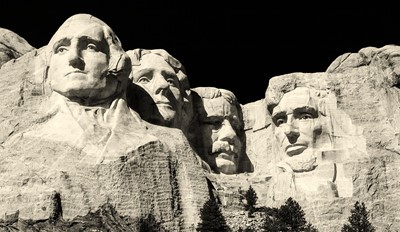The United States elections. The real winner is…

If you are interested in great past returns, then look no further than Bill Miller, manager of the Legg Mason Value Trust, a famous US-based investment fund.
This fund beat the US share market average 15 years straight, from 1991 to 2005.
At the time, this had never been done before.
Bill Miller was touted as a genius by the media and by ratings organisations like Morningstar, who named him “Fund Manager of the Decade” bestowing its highest 5-star rating on his fund.
As you can imagine, investors who loved past returns, flocked to his fund. The money poured in from investors around the world. It grew to $16.5 billion as investors clamored to get their share of the lucky manager.
Unbeknownst to Bill Miller’s investors, he was taking a lot more risk than anyone else. Typically, he would buy 40 companies, often in distress and risky. Hence the name ‘value’ in the title of his fund.
The word ‘value’ represents a conservative strategy, right? Buying cheaper, under-valued companies.
One of his bets was to buy a company called Freddie Mac, a specialised mortgage lender, in the 1980s when it was threatened with bankruptcy. He made a return of 5000%.
Was he a genius, or was he lucky?
He certainly wasn’t unlucky.
40 out-of-favour companies in the fund, often in the same or similar industries? That is a very concentrated portfolio.
In late 2007 some of the fund’s investments started heading downhill. He thought the market was wrong, that other investors were over-reacting. He doubled down, buying up more of his investments as the price fell.
He could see people getting out of financial companies and mortgage lenders and he snapped them up. They were cheap.
He bought heavily into AIG (American International Group), a finance and insurance behemoth.
2007 turned into 2008 and most of Bill’s investments were heading for rock bottom. Lehman Brothers, a huge merchant bank, was allowed to fail. Things were getting worse and Bill’s investors were heading for the exit.
AIG was considered “too big to fail” and received a $180 billion government bailout. It was the largest bailout in history. (It was finally paid back in 2013).
By the bottom of the crisis the Legg Mason Fund had lost 75% of its funds under management and those that left the fund had lost up to 60% of their wealth.
After the most famous run of 15 years of above-average returns the fund was now at the bottom of all the return periods for funds of its type, according to Morningstar.
The lessons we learned from the Bill Miller story is to be happy with the market return. Why do we need any more than that when it is so easy to get it wrong and end up with less?
We get the market return by investing across the whole market. Anything else brings along with it, extra risk.
As soon as extra risk is involved luck becomes the dominant factor.
I would never want to base my investment strategy on luck. There is enough uncertainty in the world without doubling down on risk.
Keep asking great questions …